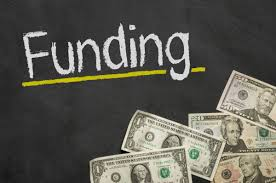Ed Souce: 1 in 8 U.S. kids have IEPs; 750,000 in California
- The end of childhood

- Nov 13, 2021
- 3 min read
Nov 10, 2021, Ed Source: (OP ED) Now is the time for schools to invest in special-education inclusion models that benefit all students
…One in 8 students in U.S. public schools have an individualized education plan, or IEP, making them eligible for special education services. About 750,000 students with disabilities attend California public schools….
At Caliber ChangeMakers Academy— where I have been a program specialist for five of the 10 years I have worked with students with disabilities — we knew an inclusion model was best for Ivan and many others. Yet, we didn’t think we had the tools or resources to make it possible.
We were wrong.
Schools can support students like Ivan — and those of all abilities — to learn from and alongside one another in an inclusive setting without exorbitant costs if they rethink how they allocate resources and develop educators’ confidence and competence in teaching all students in a general education setting.
In 2019, we began intentionally organizing staff, time and money toward inclusion, and we did so without spending more than similar public schools do that don’t focus on inclusion.
Now, with the infusion of federal Elementary and Secondary School Emergency Relief funding, schools have additional resources to invest in this approach now, in service to longer-term, sustainable change….
It didn’t happen overnight, but three steps were important to our efforts to adopt a more inclusive model for teaching and learning:
• Shift special education staff into general education classrooms to support targeted group sizes. At Caliber ChangeMakers Academy, special education teachers are departmentalized, each serving as a co-teacher to two general education teachers, leveraging their content expertise to share responsibility for classroom instruction. That means some special education teachers now teach students who are not part of their caseload. That means they are tracking the goals of more students, which also means that young people have more specialty educators working together to support their individual needs.
• Prioritize connected professional learning around inclusion for all teachers. We adjusted teachers’ schedules to incorporate collaborative time for general education and special education teachers to meet before, during and after lessons to plan engaging, differentiated instruction for all. On the surface, the reduction in individual planning time might be a challenge. However, our teachers have found that they now feel more prepared, effective and connected because they have a partner to turn to for feedback, suggestions and encouragement.
• Invest in social-emotional and mental health staff to narrow the scope of special education teachers. These staff members work to reduce unnecessary special education referrals and mitigate troubles facing students regardless of their disability status. They also can help address unexpected challenges, meaning special education teachers can spend more time in general education classrooms. A tradeoff we made is to slightly increase class sizes with fewer general administrative and support staff to prioritize hiring experienced social-emotional learning and mental health professionals.
For schools eager to adopt a more inclusive instructional model, now is the time. The emergency federal funding creates unprecedented opportunities for school and system leaders to build research-backed, sustainable inclusion models that can better meet the needs of all students, including students with disabilities.
I’ve seen firsthand that inclusive, diverse classrooms can provide powerful learning opportunities for all students.
As for Ivan, he’s now in eighth grade and thriving in an inclusive, co-teaching classroom. He went from completing almost no academic work independently to completing science lab reports on his own, working in collaborative groups in his English class and declaring that he loves math. Because our school invested in and normalized differentiated supports in an inclusive setting, now Ivan and many other students are getting what they need to be successful academically, socially and emotionally.
•••
Kimberly Berry is a special education program specialist at Caliber ChangeMakers Academy in Vallejo.





Comments